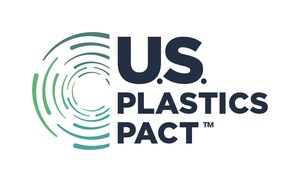PITTSBURGH, Aug. 28, 2024 /PRNewswire/ -- U.S. Plastics Pact (U.S. Pact), a collaborative organization transforming the plastics packaging industry in the United States, has released an updated report detailing its ongoing, accelerated action to eliminate problematic and unnecessary materials from the plastics value chain. This report comes at a critical time, as the U.S. government has recently shifted its position to support global targets that limit virgin plastic production, aligning with the U.S. Pact's mission to advance a circular economy. The report underscores the urgency and shared responsibility to shift to readily reusable, recyclable, or compostable materials to achieve a circular economy. It provides a clear path for addressing design challenges (e.g., contaminants), enabling advancements in circular package design, increasing recovery opportunities, and enhancing the quality of recycled content.
Aligning Objectives for Sustainable Packaging
Understanding the critical role packaging design professionals play in leading the industry toward a circular economy, U.S. Plastics Pact has prioritized the removal of materials that hinder recyclability and compostability. This strategic focus aligns with the industry's goal of reducing plastic packaging's environmental and human-health impacts while enhancing the quality of recycled content available for future packaging needs.
"This report furthers our mission to support our member-Activators in achieving their objectives by providing clear, actionable guidance on eliminating materials that do not align with a circular economy," said Jonathan Quinn, CEO of U.S. Plastics Pact. "The report also exists to encourage increased engagement and innovation from companies throughout the plastics value chain, in hopes not merely to eliminate materials, but to discover potential new pathways to their circularity."
While the eleven items on the previous report are expected to be eliminated by 2025, this updated report highlights additional problematic and unnecessary materials to be eliminated or redesigned by 2030 and supports the development of policies that incentivize reuse, recycling, and post-consumer recycled (PCR) content in packaging. Key materials identified for elimination include:
- Non-Compostable Produce Stickers: Targeted for elimination by 2030, these stickers are being replaced by compostable alternatives, aligning with industry efforts to reduce compost contamination and compost more food waste.
- Multi-material Plastic Packaging: Innovations in packaging design and modernized manufacturing infrastructure are crucial for phasing out these materials by 2030.
- Degradability Additives: These additives have been shown to disrupt recycling and composting processes. Oxo-degradable additives are set for elimination by 2025, and all other degradability additives are set for elimination by 2030.
In addition to the Problematic and Unnecessary Materials Report, the U.S. Pact Activators have developed a new Evaluation List of materials identified for future evaluation. Items on this list don't have a clear path to circularity, but for a variety of reasons such as impact to carbon footprint of an item or lack of viable alternatives for a necessary material, elimination may not be the appropriate recommendation. For these materials, key actions and needs for innovation are identified that will enable circularity if the necessary steps are taken across the value chain. The Evaluation List brings additional transparency for all stakeholders, providing a line of sight to ongoing focus areas.
"The updated Problematic and Unnecessary Materials Report builds upon the original report and will guide the development of truly circular plastic packaging," said Quinn. "This advances our efforts to create a robust framework for sustainable packaging practices across the nation. Eliminating materials that hinder the recycling or composting stream is a crucial step toward opening pathways to circularity."
Practical Applications and Future Steps
U.S. Plastics Pact's targets explicitly call for the development of policies at all levels of government that support reuse, recycling, composting, and the incorporation of post-consumer recycled (PCR) content in packaging. The organization also provides effective guidance and resources to assist companies in the transition to more sustainable materials. By offering practical support and resources, such as robust design guidelines, technical trainings, and innovation workshops, U.S. Pact empowers stakeholders to make meaningful changes within their organizations, so that eliminating problematic materials is not just aspirational but achievable. Earlier month, the U.S. Plastics Pact released three reports designed to guide the lifecycle of reusable, recyclable, and compostable plastic packaging in the U.S.
Conclusion
As the U.S. Plastics Pact continues to drive the transition toward a circular economy, this report is a testament to the collective efforts of more than 100 businesses, organizations, and government agencies. With clear, direct communication and a focus on practical application, the U.S. Plastics Pact invites all stakeholders to join these efforts to build a more sustainable future.
About the U.S. Plastics Pact:
U.S. Plastics Pact is a solutions-driven consortium in partnership with the World Wildlife Fund and The Recycling Partnership, launched as part of the Ellen MacArthur Foundation's global Plastics Pact network. We bring together businesses, not-for-profit organizations, research institutions, government agencies, and other partners to rethink the way we design, use, and reuse plastics, creating a path forward to realize a circular economy for plastic packaging in the United States.
Media Contact: Eric Downing, Director, Communications and Marketing, [email protected]
SOURCE U.S. Plastics Pact

WANT YOUR COMPANY'S NEWS FEATURED ON PRNEWSWIRE.COM?
Newsrooms &
Influencers
Digital Media
Outlets
Journalists
Opted In




Share this article